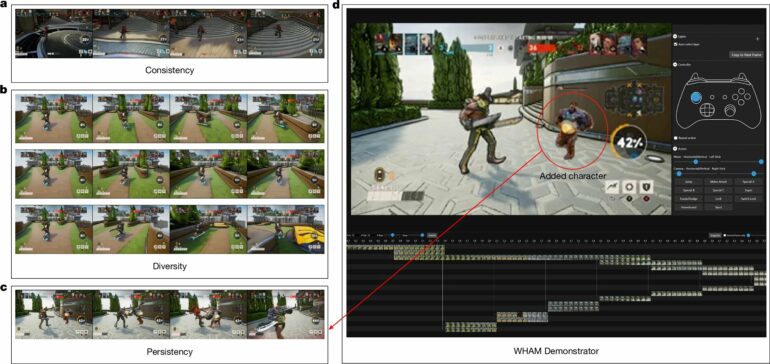A generative artificial intelligence (AI) tool that could help video game designers to craft gameplay iteratively is presented in a Nature paper. The AI model, developed by researchers at Microsoft, generated robust three-dimensional (3D) worlds that obeyed the mechanics of the video game they were designed for.
Video gaming comprises the largest portion of the entertainment industry, with billions of people playing and purchasing video games worldwide. Meanwhile, as the popularity of generative AI continues to grow in creative fields, its role in aiding video game development remains unclear.
To understand the needs of video game developers, researcher Katja Hofmann and colleagues interviewed 27 video game developers from creative teams. These individuals believed current AI solutions for building video games lacked the ability to generate many different ideas (divergent thinking). They also highlighted the importance of needing to continuously fine-tune game aspects through the design process (iterative practice).
The authors then developed an AI model called the World and Human Action Model (WHAM), which was trained using seven years’ worth of human gameplay from Bleeding Edge, a 3D multiplayer battle simulator.
The researchers found that WHAM could craft complex 3D video game sequences that were consistent with Bleeding Edge’s pre-existing mechanics, featured noticeable diversity in level design and allowed creatives to tweak the output iteratively. Hofmann and colleagues also developed the WHAM Demonstrator to serve as a visual interface for users to engage with and customize the outputs of WHAM.
The authors consider that because WHAM learned to generate sequences with only training on gameplay and no previous knowledge, this tool could be easily transferred to generate levels from other video games. Similarly, they note that it is unlikely that AI tools such as WHAM could serve as the endpoint of the design process, and should rather be used as a tool to assist human game designers.
Future research on this approach may help to analyze how WHAM might be used among a team of creatives in various stages of the design process.
More information:
Anssi Kanervisto et al, World and Human Action Models towards gameplay ideation, Nature (2025). DOI: 10.1038/s41586-025-08600-3
Provided by
Nature Publishing Group
Citation:
AI tool creates 3D video game worlds with iterative design (2025, February 19)



